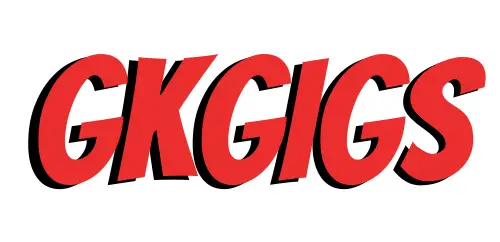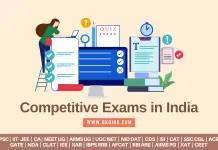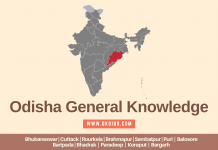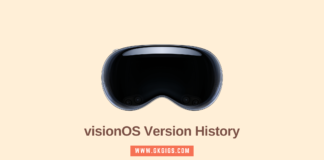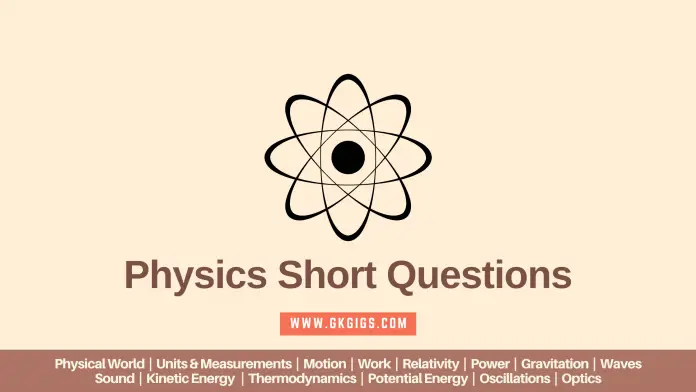
Last Updated: 10 October 2025
Are you looking for Important Physics Short Questions and Answers to read before your class 10 Board Exam?
You came to the right place! This article contains all the chapters that are on your physics syllabus for both ICSE and CBSE Boards.
Physics Short Questions and Answers will help you to boost your preparation because this article contains mixed questions from all the chapters of your syllabus that one should not miss while preparing for the exam.
All questions are solved and written in simple English step by step to guide and help you achieve good marks in your class 10 Board exam.
Physics Short Questions
1. Name the device used for measuring (i) Mass (ii) Weight?
Answer: i) Physical Balance ii) Spring Balance
2. A man weighs 360 N on the earth:
(i) What would be his approximate weight on the moon?
(ii) What is the reason for your answer?
Answer: Weight on earth= 360 N
(i) Approximate weight on the moon= 1⁄6 x 360= 60 N
(ii) The weight on the moon has been reduced because the acceleration due to gravity on the moon is 1⁄6th that on the earth (∵ W=mg), therefore the weight is reduced to 1⁄6 i.e., 60 N
3. A device is used to transform 12V a.c. to 200V a.c.
(i) What is the name of this device?
(ii) Name the Principal on which it works?
Answer:
(i) Step-Up Transformer
(ii) Mutual Induction
4. A body is acted upon by a force. State 2 conditions under which the work done could be Zero?
Answer: We know that W= FS cosθ. Clearly, the world done by the force will be zero if:
(i) S= 0 i.e., no displacement takes place.
(ii) If θ= 90°, then cos90°= 0, and W= 0 i.e., When the force acts perpendicular to the direction of motion.
5. A spring is kept compressed upon by a small trolley of mass 0.5 Kg lying on a smooth horizontal surface. When the trolley is released, it is found to move at a speed of 2ms-1. What Potential Energy did the spring possess when compressed?
Answer: When the spring is compressed, there is potential energy stored in it. When the trolley is released the potential energy of the spring is converted to the kinetic energy of the trolley.
∴ P.E. of the spring= ½mv2= ½ x 0.5 x 2 x 2= 1 J
6. Name the physical quantity which is measured in calories. How are calories related to the S.I. unit of that quantity?
Answer: Heat Energy is measured in calories. S.I. unit is Joule.
∴ 1 Calorie= 4.18 J
7. Define Couple? State the S.I. unit of moment of a couple?
Answer: Two equal and opposite parallel forces, not acting along with the same line form a couple. S.I. unit of moment of couple= Nm or Joule
8. Define Critical Angle? State two important factor which affects the critical angle of a given medium?
Answer: Critical Angle is the angle of incidence in a denser medium corresponding to which the angle of refraction in the rarer medium is 90°.
Factors are: Refractive Index and Wavelength
9. An Electromagnetic Radiation is used for photography in fog.
(i) Identify the Radiation?
(ii) Why is this Radiation mentioned by you, ideal for this purpose?
Answer:
(i) Infrared Radiations
(ii) Infrared Radiations are used for this purpose because they do not scatter much and can penetrate appreciably through it.
10. What is the relation between the refractive index of water with respect to air (aµw) and the refractive index of air with respect to water (wµa)?
Answer: aµw x wµa = 1
∴ According to the Principle of Reversibility: aµw = 1/wµa
11. The Specific Heat Capacity of substance A is 3800 JKg-1K-1 and that of substance B is 400 JKg-1K-1. Which of the two substances is a good conductor of heat?
Answer: Substance B is a good conductor of heat because b has high conductivity as it has low specific heat capacity. Low specific heat capacity= Good conductor of heat.
12. (i) If the lens is placed in water instead of air, How does its focal length change?
(ii) Which lens, thick or thin has a greater focal length?
Answer:
(i) Focal Length will not change as Focal Length does not depend on external parameters.
(ii) Thin lens has a greater focal length.
13. Two waves of the same pitch have amplitude in the ratio 1:3. What will be the ratio of their (i) Intensities (ii) Frequencies?
Answer:
(i) Given, Amplitude= 1:3
∴ Intensities= (1/3)2= 1/9
(ii) Frequencies do not depend upon amplitude. ∴ its ratio is 1:1
14. How does an increase in temperature affect the Specific Resistance of a (i) Metal (ii) Semiconductor?
Answer: (i) Metal: Increase (ii) Semiconductor: Decrease
15. A man playing the flute can produce notes of different frequencies. If he closes the holder near his mouth, will the pitch of the note produced, increase, or decrease?
Answer: Pitch Decreases. As the length of the air column increases in the flute.
16. Is it possible for a hydrogen (H) nucleus to emit an alpha particle?
Answer: No, it is not possible. It does not have enough electrons and protons for emitting alpha particles.
17. Which characteristic of sound, makes it possible to recognize a person by his voice without seeing him?
Answer: Pitch
18. (i) Does the Specific Heat Capacity of a substance remain the same when its state changes from solid to liquid?
(ii) Give one example to support your answer?
Answer:
(i) No, the Specific Heat Capacity of a substance changes when its state changes from solid to liquid.
(ii) Ice and Water have different Specific Heat Capacities.
19. Why a nuclear fusion reaction is called a Thermos Nuclear Reaction?
Answer: Nuclear fusion reaction is called a Thermos Nuclear Reaction as it does not occur in ordinary temperature. It needs about 107 Kelvin temperature.
20. How does the angle of deviation formed by a prism change with the increase in the angle of incidence?
Answer: First with an increase in the angle of incidence, the angle of deviation first decreases to deviation medium, and then it increases.
Related: Simple Interest And Compound Interest Multiple Choice Questions
21. (i) A Virtual, Diminished image is formed when an object is placed between the Optical Center and the Principal Focus of a lens. Name the type of lens which forms the above image?
(ii) An object is placed at a distance of 24 cm from a convex lens of focal length 8 cm. What is the nature of the image so formed?
Answer: (i) Concave Lens (ii) Real Image
22. It is observed that during march-past we hear a base drum distinctly from a distance compared to the side of the drums?
(i) Name the characteristics of the sound associated with the above observation?
(ii) Give a reason for the above observation?
Answer:
(i) Loudness is characteristic of the sound associated with the above observation.
(ii) Surface Area of the bass drum is more, hence amplitude is more, therefore it produces more loudness.
23. (i) What is the advantage of connecting electrical appliances in parallel combination?
(ii) What characteristics should a Fuse wire have?
(iii) Which wire is connected to the metallic body of the appliance?
Answer:
(i) If 2 appliances are connected in parallel combination then if one is damaged the other will not be damaged or affected.
(ii) A Fuse wire should have high resistivity and a low melting point.
(iii) Earth Wire
24. (i) What is Calorimetry?
(ii) Name the material used for making a Calorimeter?
(iii) Why is the Calorimeter made up of thin sheets of the material answered in (ii)?
Answer:
(i) Calorimetry is the measurement of heat energy i.e., Heat Lost or Heat Gained.
(ii) Copper
(iii) Copper has low specific heat capacity, the thermal capacity further decreases if thin sheets of copper are used.
25. With reference to the terms Mechanical Advantage, Velocity Ratio, and Efficiency of a machine Name the term that will not change for a machine of a given design and Define it?
Answer: Velocity Ratio of a Machine, It is defined as the ratio of the Displacement of the Effort to the Displacement of the Load.
26. What is the S.I. unit of Energy? How is the electron volt (eV) related to it?
Answer: The S.I. unit of Energy is Joule. 1eV = 1.6 x 10-19 J
27. State the energy changes that take place in (i) Photovoltaic Cell (ii) Electromagnet
Answer: (i) Light Energy to Electric Energy (ii) Electrical Energy to Magnetic Energy
28. What are the conditions required for Total Internal Reflection of light to take place?
Answer:
(i) Angle of Incidence must be greater than Critical Angle for the given pair of Media.
(ii) The ray should travel from Denser Medium to Rarer Medium.
29. Why is White Light considered to be Polychromatic in nature? What range of the wavelength of Electromagnetic Waves is visible to us?
Answer: White Light is made up of seven colors i.e., VIBGYOR which is why it is considered to be polychromatic. 4000 Å to 8000 Å range of wavelength are visible to us.
30. A string musical instrument, such as a sitar is provided with a number of wires of different thicknesses. What is the reason?
Answer: String instruments such as sitar are provided with a number of wires of different thicknesses so that the frequency of vibration could be altered thereby changing the pitch of the sound produced.
31. (i) Name the material which is used as a Fuse Wire?
(ii) Give two characteristic properties of copper wire which make it unsuitable to use as a fuse wire?
Answer:
(i) The material used for Fuse Wire is an alloy of Lead and Tin.
(ii) The two characteristics which make Copper wire unsuitable to use as a Fuse Wire are: a) Low Resistivity b) High Melting Point
32. Why do pieces of ice added to a drink cool it much faster than ice-cold water added to it?
Answer: Ice needs an amount of heat, equal to its specific latent heat (336 x 103 J/Kg) of fusion to melt and form water at 0° C. Hence each kilogram of ice can withdraw 336 x 103 J more heat than ice-cold water at 0° C. Pieces of ice, therefore, produce more effective cooling than ice-cold water.
33. (i) Give two important precautions that should be taken while handling radioactive materials?
(ii) What is the name given to atoms of a substance which have the same atomic number but a different mass number?
(iii) What is the difference in the atomic structure of such atoms?
Answer:
(i) Two important precautions while handling radioactive materials are:
a) One should wear lead-lined aprons and lead gloves.
b) One should handle the radioactive materials with long lead tongs.
(ii) Isotopes
(iii) Such atoms have the same number of protons but different number of neutrons
34. (i) What is the principle on which Sonar is based?
(ii) A person is tuning his radio set to a particular station. What is the person trying to do to tune it?
(iii) Name the phenomenon involved in tuning the radio set?
Answer:
(i) Principle of Echo
(ii) The person is trying to change the values of the electronic components to produce vibrations of frequency equal to that of the incoming radio waves which he wants to receive.
(iii) Resonance
35. (i) State the energy conversion taking place in the generator when it is working?
(ii) Define One Newton?
(iii) Name a machine that can be used to (a) Multiply Force (b) Change the direction of force applied?
Answer:
(i) Mechanical Energy to Electrical Energy
(ii) If a body of mass 1 Kg moves with an acceleration of 1 m/s then force acting on the body is said to be One Newton.
(iii) (a) Nut Cracker (b) Single Fixed Pulley
36. (i) When does a ray of light falling on a lens pass through it undeviated?
(ii) Which lens can produce a real and inverted image of an object?
Answer:
(i) A ray of light falling on the lens passes through it undeviated when it passes through the optical center of the lens.
(ii) Convex Lens
37. (i) When an acoustic resonance takes place, a loud sound is heard. Why does this happen? Explain
(ii) What is the color code for the insulation on the earth wire?
(iii) Write an expression for calculating electrical power in terms of current and resistance?
Answer:
(i) When acoustic resonance takes place, a loud sound is heard. This is because the natural frequency of the vibrating body becomes equal to the frequency of externally applied force due to which amplitude becomes large and hence loud sound is heard.
(ii) Green or Yellow
(iii) P = I2R
38. Fill in the blanks:
(i) During the emission of a beta particle, the ________ Number remains the same.
(ii) The minimum amount of energy required to emit an electron from a metal surface is called _______.
(iii) _______ radiation travels with the speed of light.
(iv) _______ radiation has the highest ionizing power.
Answer:
(i) Mass
(ii) Work Function
(iii) γ-rays
(iv) α-particles
39. State and define the S.I. unit of power? How is the unit of horsepower related to the S.I. unit of power?
Answer: The S.I unit of power is the watt (W)
Definition: If 1 Joule of work is done in 1 second, the power spent is said to be 1 watt.
➡ 1 H.P.= 746 watt
40. (i) State the energy change in (a) An Electric Iron (b) A Ceiling Fan?
(ii) Why is the ratio of the velocities of light of wavelength 4000Å and 8000Å in vacuum 1:1?
(iii) Which of the above wavelength has a higher frequency?
Answer:
(i) (a) Electrical Energy to Heat Energy (b) Electrical Energy to Mechanical Energy
(ii) In a vacuum, the velocity of light is always constant i.e., 3×108 m-1 and it does not depend on wavelength or frequency.
(iii) We know that: c= λv or v= c/λ
∴ v ∝ 1/λ, Hence lower wavelength 4000Å will have a higher frequency.
Related: MCQ Questions On Volume And Surface Area Of Solids
41. (i) If the power of the lens is -5D (a) What is the Focal Length (b) Name the type of Lens?
(ii) State the position of the object in front of a converging lens if:
(a) It produces a Real and same size image of the object
(b) It is used as a magnifying lens
Answer:
(i) Given P= -5D
(a) f= 1/P = 1/-5 m = -0.2 m = -20 cm
∴ Focal Length= -20 cm
(b) The negative power indicates that the lens is a Concave Lens
(ii) (a) The object should be placed on the Principal Axis at a distance equal to twice the Focal Length of the lens (or at 2F1).
(b) The object is placed between the first focal point (F1) and the lens.
42. Define Scattering?
(i) State the relationship between the Critical Angle and the Absolute Refractive Index of a medium
(ii) Which color of light has a higher critical angle? Red Light or Green Light?
Answer: The process of absorption and then re-emission of light energy is called Scattering of Light
(i) μ= 1/sin C= cosec C, where μ is the Absolute Refractive Index of medium and C is the Critical Angle
(ii) Critical Angle increases with the increase in wavelength of light, hence, Red Light having a longer wavelength than Green Light has a higher Critical Angle.
43. What is Nuclear Fusion? Nuclear power plants use the Nuclear Fusion reaction to produce electricity. What is the advantage of producing electricity by fusion reaction?
Answer: Nuclear Fusion is the process in which two light nuclei combine to form a heavy nucleus. In this process, a huge amount of energy is released.
Nuclear Fusion is not possible at ordinary temperature and ordinary pressure, but the advantage of Fusion Reaction over Fission Reaction is that the fusionable substance is not radioactive, so it does not give out any harmful radiation and the disposal of its waste is not difficult.
44. What do you understand by free vibrations of a body? Why does the amplitude of a vibrating body continuously decrease during damped vibrations?
Answer: The periodic vibrations of a body in the absence of any external force on it, are called free vibrations.
The amplitude of a vibrating body continuously decreases during damped vibrations because of the frictional (resistive) force due to the surrounding medium.
45. Which type of current does the transformer work?
Answer: Alternating Current (A.C.)
46. (i) How can a temperature in degree Celsius be converted into an S.I. unit of temperature?
(ii) A liquid A has the maximum specific heat capacity and is used as a coolant in car radiators. Name the liquid A?
Answer:
(i) The S.I. unit of temperature is Kelvin (K). To convert temperature in degree Celsius to degree Kelvin 273.15 is added to Celsius. i.e., K= °C + 273.15
(ii) Water
47. Identify the following wires used in a household circuit:
(i) The wire is also called the Phase Wire
(ii) The wire is connected to the top terminal of a three-pin socket
Answer:
(i) Live Wire
(ii) Earth Wire
48. State two advantages of Electromagnets over Permanent magnets?
Answer:
(i) The strength of the magnetic field of an electromagnet can easily be changed by changing the current or the number of windings in its solenoid
(ii) The polarity of the electromagnet can be reversed by reversing the direction of current in its solenoid
49. Why is a jackscrew provided with a long arm? Which class of lever will always have M.A. > 1 and why?
Answer: A jackscrew is provided with a long arm to increase the perpendicular distance of the point of application of force from the axis of rotation so that we can apply a small force to rotate the jack to lift the heavy load.
A Class II lever will always have M.A.> 1 because the load lies between the fulcrum and the effort. Hence, the effort arm is always longer than the load arm
Since, M.A.= Effort Arm/Load Arm and Effort Arm > Load Arm
∴ M.A.> 1
50. Define Heat Capacity and state its S.I. unit? Why is the base of a cooking pan generally made thick?
Answer: The amount of heat energy needed to raise the temperature of a body by 1°C (or 1 K) is called the Heat Capacity or Thermal Capacity of the body.
The base of a cooking pan is made thick to increase its heat capacity so that it gets heated slowly and imparts sufficient heat energy at a slow rate to the food for its cooking. It also helps to keep the cooked food warm for a long time.
Related: 120+ Biology Differentiate Between Questions (CBSE & ICSE)
51. How is the frequency of a stretched string related to (a) Length (b) Tension?
Answer: (a) The frequency of vibration of a stretched string is inversely proportional to its length, (f ∝1/l)
(b) The frequency of vibrations of a stretched string is directly proportional to the square root of the tension applied on the string. (f∝√T)
52. What are the two causes of energy loss in a transformer?
Answer: (i) Energy loss due to induced (or eddy) currents in the core.
(ii) Energy loss due to heat produced in coils (copper loss)
53. When does the nucleus of an atom tend to be radioactive?
Answer: The nucleus of an atom becomes radioactive if the nucleus is large (i.e, atomic number> 82) or if the number of neutrons is much more than the number of protons.
54. What do you understand by the following statements:
(i) The Heat Capacity of the body is 60 JK-1
(ii) The Specific Heat Capacity of Lead is 130 JKg-1K-1
Answer: (i) The Heat Capacity of the body is 60 JK-1. This means that the amount of heat energy required to raise the body’s temperature by 1 K without going through a change of state is 60 J.
(ii) The Specific Heat Capacity of lead is 130 JKg-1K-1. This means that the amount of heat energy needed to raise the temperature of 1 Kg of Lead through 1 K is 130J.
55. State two factors upon which the heat absorbed by a body depends?
Answer: (i) Rise in the temperature of the body (ii) Mass of the body
56. State the dependence of the Angle of Deviation:
(i) On the Refractive Index of the material of the prism.
(ii) On the Wavelength of light.
Answer: (i) If the Refractive Index of the material increases, the Angle of Deviation also increases.
(ii) Lesser the Wavelength of light, the greater is the Angle of Deviation.
57. State two ways by which the frequency of transverse vibrations of a stretched string can be increased?
Answer: (i) By increasing the Tension in the string
(ii) By decreasing the Length of the vibrating string
58. Which coil of a step-up transformer is made thicker and why?
Answer: In a step-up transformer, the primary coil carries more current than the secondary coil. So, to withstand high currents, the primary coil of the transformer should be made thicker.
59. Arrange α, β, and γ rays in ascending order with respect to their
(i) Penetrating Power
(ii) Ionising Power
(iii) Biological Effect
Answer:
(i) α < β < γ
(ii) γ < β < α
(iii) α < β < γ
60. (i) Name one factor that affects the lateral displacement of light as it passes through a rectangular glass slab?
(ii) On reversing the direction of the current in a wire, the magnetic field produced by it gets _______.
(iii) In a beam balance when the beam is balanced in a horizontal position, it is in _______ equilibrium.
Answer: (i) The thickness of the glass slab affects the lateral displacement of light as it passes through a rectangular glass slab.
(ii) Reversed
(iii) Static
Related: Area And Perimeter Multiple Choice Questions (CBSE & ICSE)
61. How is work done by a force measured when the force:
(a) Is in the direction of displacement.
(b) Is at an angle to the direction of displacement.
Answer:
(a) Work done is given by the product of the force (F) and the displacement (d) in the direction of the force
i.e., Work done = F x d
(b) Work done is measured by the product of the force (F) and the component of displacement (d) in the direction of the force
i.e., Work done = F x d cosθ, where θ is the angle which the displacement makes with the direction of the force.
62. Explain the motion of a planet around the sun in a circular path?
Answer: The motion of a planet around the sun in a circular path is due to the centripetal force which is provided by the gravitational force of attraction on the planet by the sun.
63. Where can a body execute Free Vibrations?
Answer: A body can execute Free Vibrations in a Vacuum because the presence of any medium offers resistance, as a result, the amplitude of vibrations does not remain constant.
64. (i) What happens to the resistivity of semiconductors with the increase of temperature?
(ii) For a fuse, the higher the current rating ______ is the fuse wire.
(iii) Name the high energetic invisible electromagnetic waves which help in the study of the structure of crystals.
(iv) What is the use of the waves mentioned in (iii)?
Answer:
(i) The resistivity of semiconductors decreases with the increase in temperature.
(ii) Thicker
(iii) X-rays
(iv) They are used for the detection of fracture in bones.
65. Mr. Amit is surprised when he sees water boiling at 115 °C in a container. Give a reason as to why water can boil at the above temperature?
Answer: Water boils at a higher temperature because of the increase in pressure or the presence of some impurity. More impurity or pressure more will be the boiling point.
66. (i) Why does a current-carrying, freely suspended solenoid rest along a particular direction?
(ii) State the direction in which it rests?
Answer: (i) This is because the current-carrying freely suspended solenoid behaves like a magnet.
(ii) It rests in the north-south direction.
67. State 2 similarities between an A.C. generator and a D.C. motor?
Answer: (i) Armature Coil rotates in a magnetic field.
(ii) The external circuit is connected to two carbon brushes.
68. (i) What is the weight of a body placed at the center of the earth?
(ii) What is the principle of an ideal machine?
Answer: (i) The weight of a body placed at the center of the earth is Zero, as g= 0.
∴ W= mg = 0
(ii) An ideal machine works on the principle of Work Input = Work Output and has 100% efficiency as there is no energy loss.
69. (i) When does a Force do Work?
(ii) What is the work done by the moon when it revolves around the earth?
Answer: (i) Work is said to be done when the applied force produces displacement in the direction of the force. Work Done = Force x Displacement
(ii) Work done is zero by the moon, as there is no displacement since it is moving in a circular path.
70. State one advantage and disadvantage of using nuclear energy for producing electricity?
Answer:
Advantage: Tremendous amount of electrical energy can be produced by using a very small amount of nuclear fuel.
Disadvantage: The nuclear waste produced by it is the source of harmful radiation and also causes environmental pollution.
71. What is consumed by different electrical appliances, for which electrical bills are paid? Name a common device that uses electromagnet?
Answer: Electrical Energy is consumed by different electrical appliances in KWh, which is commercially known as a unit.
1 KWh = 1 KW x 1 hr = 1 unit of electricity
Electromagnets are used in electric bell, door alarm, electric motor, etc.
72. (i) A ray of light passes from water to air. How does the speed of light change?
(ii) Which color of light travels fastest in any medium except air?
(iii) Name a prism required for obtaining a spectrum of ultraviolet light?
(iv) Name the radiations which can be detected by a thermopile?
Answer:
(i) When light passes from water to air i.e., from denser to rarer medium, its speed increases.
(ii) Red Light travels fastest.
(iii) Quartz Prism
(iv) Infrared Radiations
73. (i) Why is the color Red used as a sign of danger?
(ii) What are mechanical waves?
(iii) Name one property of waves that do not change when the wave passes from one medium to another?
Answer: (i) Red color is used as a sign of danger due to its longest wavelength and lesser deviation (scattering). Therefore, it can reach a longer distance.
(ii) Mechanical waves are waves that require a medium for their propagation. E.g: Sound Waves.
(iii) Frequency
74. (i) Where is the center of gravity of a uniform ring situated?
(ii) A force is applied on a body of a mass of 20 Kg moving with a velocity of 40 ms-1. The body attains a velocity of 50 ms-1 in 2 seconds. Calculate the work done by the body?
Answer:
(i) Geometric Centre
(ii) Work Done (W)= ½ x m x (v22 – v12) = ½ x 20 x (502 – 402) = 9000 J
75. In what way ‘Ideal Machine’ differ from a ‘Practical Machine’? Can a Simple Machine act as a Force Multiplier and a Speed Multiplier at the same time?
Answer: Ideal Machine has 100% efficiency i.e., work done on the machine is equal to the work done by the machine while a practical machine is not 100% efficient due to the energy loss in friction, etc.
No, it will either be acting as a Speed Multiplier or a Force Multiplier but not both at the same time.
76. A bucket kept under a running tap is getting filled with water. A person sitting at a distance can get an idea of when the bucket is about to be filled?
(i) What changes take place in the sound to give this idea?
(ii) What causes the change in the sound?
Answer:
(i) As the bucket is filled, the sound becomes shriller due to a decrease in length of the air column and an increase in frequency.
(ii) The change in sound takes place due to a change in frequency of sound due to a decrease in the length of the air column.
77. Which of the following radioactive radiations:
(i) Can cause severe genetical disorders?
(ii) Are deflected by an electric field?
Answer:
(i) λ-radiation
(ii) α and β radiations
78. What is a Moment of Force? If the Moment of Force is assigned a negative sign then will the turning tendency of the force be clockwise or anti-clockwise?
Answer: Moment of Force: It is equal to the product of the magnitude of the force and the perpendicular distance of the line of action of a force from the axis of rotation.
If the moment of force is assigned a negative value, it means the clockwise tendency of force.
79. What is ‘Dispersion of Light’? In the atmosphere which color of light gets scattered the least?
Answer: When a beam of white light falls on a prism it splits into the rays of constituent colors. This is known as Dispersion of Light.
In the atmosphere, Red color scatters the least because of its long wavelength.
80. Name one factor which affects the frequency of sound emitted due to vibrations in an air column? Name the unit used for measuring the sound level?
Answer: Factor: Length of an Air Column. Decibel
Related: Time And Distance Multiple Choice Questions (Boost Your IQ)
81. Name the principle on which Dynamo works?
Answer: Principle of Electromagnetic Induction
82. State two important sources of Background Radiation?
Answer:
(i) The radioactive substances such as Potassium (K-40), Carbon (C-14), and Radium present inside or body.
(ii) Cosmic Rays, Solar Radiations coming from outer space, and naturally occurring radioactive elements such as radon-222
83. Where does the position of the center of gravity lie for?
(i) A Circular Lamina (ii) A Triangular Lamina
Answer:
(i) Centre of the lamina
(ii) Point of intersection of medians
84. (i) How is the Refractive Index of a medium related to its Real Depth and Apparent Depth?
(ii) Which characteristic property of light is responsible for the blue color of the sky?
Answer:
(i) Refractive Index= Real Depth/Apparent Depth
(ii) Scattering of light
85. (i) Three musical instruments give out notes at the frequencies listed below, Flute: 400 Hz; Guitar: 200 Hz; Trumpet: 500 Hz. Which one of these has the highest pitch?
(ii) With which of the following frequencies does a tuning fork of 256 Hz resonate? 288 Hz, 314 Hz, 333 Hz, 512 Hz.
Answer:
(i) Trumpet (500 Hz) has the highest pitch
(ii) Tuning fork will resonate with 512 Hz
86. What is the difference between Heat and Temperature?
Answer:
| Heat | Temperature |
|---|---|
| 1) It is a form of energy | 1) It is the sensation of hotness and coldness |
| 2) Unit of heat is Joule | 2) Unit of temperature is °C or Kelvin |
87. State two differences between Light Waves and Sound Waves?
Answer:
| Light Waves | Sound Waves |
|---|---|
| 1) Light Waves do not require a medium for propagation | 1) Sound Waves require a medium for propagation |
| 2) Light waves travel with a speed of 3 x 108 m/s | 2) Sound waves travel with a speed of 332 m/s |
88. An electric iron is rated 220 V, 2 KW.
(i) If the iron is used for 2 hr daily, find the cost of running it for one week if it cost ₹4.25 per kWh?
(ii) Why is the fuse absolutely necessary in a power circuit?
Answer:
(i) Electrical Energy consumed daily = Power x Time = 2kW x 2 h= 4kWh
Electrical Energy consumed in one week = 4 kWh x 7 = 28 kWh
∴ Total cost for running it for one week = ₹ 4.25 x 28 = ₹ 119
(ii) Fuse is necessary for power circuits to limit threats to human life and property damage due to excessive current or faulty appliances that may get connected to the power circuit.
89. How does a Uniform Circular Motion differ from Uniform Linear Motion?
Answer: In Uniform Linear Motion, the speed and velocity are constant and Acceleration is zero, whereas in a Uniform Circular Motion, the velocity is variable (even though speed is uniform), so it is an accelerated motion.
90. (i) Name the radiations which are absorbed by Greenhouse gases in the earth’s atmosphere?
(ii) A radiation X is focused by a particular device on the bulb of a thermometer and mercury in the thermometer shows a rapid increase. Name the radiation X?
(iii) Name two factors on which the heat energy liberated by a body depends?
Answer:
(i) Infrared Radiations
(ii) Infrared Radiations
(iii) The heat energy liberated by a body depends on Mass, Specific Heat Capacity, and Temperature of the body.
91. What is the principle of the method of mixtures?
Answer: According to the principle of mixtures, when a hot body is mixed with a cold body, heat energy passes from the hot body to the cold body till both the bodies attain the same temperature.
If no heat energy is lost to the surroundings i.e., the system is perfectly insulated then; Heat Energy lost by the hot body = Heat Energy gained by the cold body.
92. Write a relationship between Angle of Incidence and Angle of Refraction for a given pair of media?
Answer: The ratio of the sine of the angle of incidence ‘i’ to the sine of the angle of refraction r is constant for a given pair of media. This constant is called Refractive Index.
➡ sin i/sin r = 1μ2
93. What is an Echo? State two conditions for an echo to take place?
Answer: The sound heard after reflection from a distant obstacle (cliff, wall, etc.) after the original sound has ceased is called an echo.
Conditions for an echo to take place:
(i) The minimum distance between the source of sound and the reflector in the air must be 17 m. It is different in different mediums depending upon the speed of sound in that medium.
(ii) The size of the reflector must be large enough as compared to the wavelength of the sound wave.
94. A type of electromagnetic wave has a wavelength of 50 Å?
(i) Name the wave?
(ii) What is the speed of the wave in a vacuum?
(iii) State one use of this type of wave?
Answer:
(i) X-rays
(ii) Speed of the wave in vacuum is 3 x 108 m/s
(iii) X-rays are used for determining fracture of bones, hidden objects in customs at Airports.
95. What is the principle on which SONAR is based?
Answer: SONAR is based on the principle of reflection of sound i.e., echo.
96. Why string musical instruments like the Guitar are provided with a hollow?
Answer: When the strings vibrate the air column inside the box is set into forced vibrations. Since the soundbox has a large area, it sets a large volume of air into vibrations of the same frequency as that of the string thereby producing resonance.
97. Which of the following remains constant in a uniform circular motion; Speed or Velocity or both? Name the force required for uniform circular motion. State its direction?
Answer: Speed remains constant.
The force required for uniform circular motion is ‘Centripetal Force’. It is always directed along the radius of the circular path i.e., towards the center of the circle.
98. State two ways in which Resonance differs from Forced Vibrations?
Answer:
(i) In resonance, the frequency of externally applied force must be equal to the natural frequency of the body whereas, it is not necessary for forced vibrations.
(ii) In forced vibrations, the amplitude of oscillations is small whereas in resonance the amplitude of vibration is large.
99. A cell is sending current in an external circuit. How does the terminal voltage compare with the E.M.F of the cell?
Answer: E.M.F of a cell is greater than the terminal voltage
100. Write an expression for the electrical energy spent in the flow of current through an electrical appliance in terms of I, R, and t?
Answer: Electrical Energy = I2Rt
Related: Exponents And Powers Multiple Choice Questions (CBSE & ICSE)
101. Write an expression for the heat energy liberated by a hot body?
Answer: H = mcΔT
Where H= Heat Energy, m= Mass, c= Specific Heat Capacity, and ΔT= Change in Temperature
102. What happens to the average kinetic energy of the molecules as the ice melts at 0 °C?
Answer: Average kinetic energy of the molecules remains the same.
103. A radioactive substance is oxidized. what change would you expect to take place in the nature of its radioactivity? Give a reason for your answer?
Answer: Radioactivity is a nuclear phenomenon. Hence, oxidation does not affect the nucleus of the substance.
104. Suggest one way in each case by which we can detect the presence of
(i) Infrared Radiations (ii) Ultraviolet Radiations
Answer:
(i) Infrared Radiations: These are detected by a thermopile.
(ii) Ultraviolet Radiations: When a silver chloride solution is taken in a test tube and is passed from red to violet light no change is seen. But beyond the violet end, the solution first tunes violet, and then it turns dark brown.
105. Which radiation is used in television remotes?
Answer: Infrared Radiation
106. Explain why the weather becomes very cold after a hail storm?
Answer: The weather becomes very cold after the hail storm because ice begins to melt by absorbing heat energy from the surroundings. This decreases the temperature of the surroundings which leads to the cooling of the atmosphere.
107. When 1 gram of ice at 0 °C melts to form 1 gram of water at 0 °C then, is the latent heat absorbed by the ice or given out by it?
Answer: Latent heat is absorbed by the ice.
108. Give one example each where a high specific heat capacity of water is used as a heat reservoir and for cooling purpose?
Answer:
(i) Water is used as a heat reservoir in cold countries for the preservation of juice bottles to avoid their freezing
(ii) Car Radiators
109. State in brief, the meaning of each of the following:
(i) The heat capacity of a body is 50 J°C-1
(ii) The specific latent heat of fusion of ice is 336000 JKg-1
(iii) The specific heat capacity of copper is 0.4 Jg-1°C-1
Answer:
(i) Heat capacity of a body is 50 J/°C ➙ It means 50 Joule of heat energy is required to raise the temperature of the body by 1 °C.
(ii) Amount of heat required to melt one kilogram of ice is 336000 J.
(iii) 0.4 J of heat is required to raise the temperature of one gram of copper by 1 °C.
110. Define Ohms Law?
Answer: If the physical conditions of the conductor remain the same and temperature is constant then the potential difference across the conductor is directly proportional to the current flowing in it (V=IR). This is known as Ohm’s Law.
| Read More |
- GK For Quiz Online: Test Your General Knowledge IQ
- List Of Indian State Foundation Day With GK Questions
- List Of European Countries And Their Capitals With PDF
- Indian Cricket GK Questions And Answers: World Cup, T20, IPL

